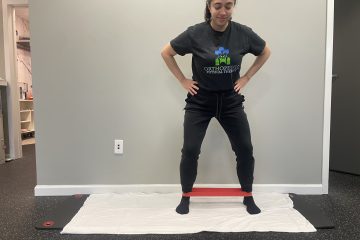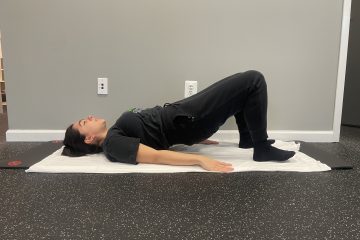When we think of pelvic floor physical therapy, we often think about pregnant or postpartum women.
But what if I told you that pelvic floor physical therapy isn’t *just* for women?
In fact, many men would benefit from pelvic floor physical therapy for several conditions, but for the purposes of this blog post, we will zero in on erectile dysfunction (ED).
Every year, more than 3 million men in the U.S. are diagnosed with erectile dysfunction.
Erectile dysfunction, defined by the inability to get or keep an erection firm enough for sexual intercourse, can affect a man’s self-esteem, confidence, and relationships.
Causes for ED are often multifactorial, which is why it may take a multifaceted approach to address it.
Common causes include:
- Medical conditions such as diabetes, heart or blood vessel disease, high blood pressure, chronic kidney disease, injuries to the prostate from surgery or cancer, injuries to the pelvis, spinal cord, or bladder, as well as pelvic floor dysfunction
- Certain medications can reduce blood to the penis and therefore decrease the ability to get or maintain an erection
- Psychological or emotional issues such as fear of sexual failure, anxiety, depression, low self-esteem, and stress
- Health-related behaviors such as smoking, drinking too much alcohol, recreational drugs, being overweight, and not being physically active
So how is the pelvic floor/pelvis involved?
The sacral nerves (S2-4), which are responsible for erection and orgasm, travel through the pelvis and pelvic floor. If nerves don’t have enough room and blood flow, there can be a decreased ability to get and/or maintain an erection. In order to be at optimum function, we need the pelvic floor muscles to be able to stretch and fill with blood. If pelvic floor muscles are tight (especially after surgery, injury, or repeated postures that compress blood flow like sitting or cycling for long stretches of time), there can be difficulty with the stretch and blood flow. If the pelvis, the structure that houses the pelvic floor muscles, nerves, and arteries, is not dynamic (mobile), there will also be a decrease in blood flow.
What do we do in Pelvic Floor PT to help free these blood flow restrictions and relax tight pelvic floor muscles?
- Stretch/lengthen the pelvic floor muscles to increase blood flow ↑
- Perform nerve glides
- Work on sacral, pelvic, and hip mobility
- Provide down training and relaxation techniques to improve mental health resulting in decreased blood pressure ↓ and increased blood flow ↑
- Instruct on how to add manageable/enjoyable exercise and activity back into routine (also resulting in decreased blood pressure ↓ and increased blood flow ↑)
- Educate on how to lengthen muscles in the penis and improve blood flow there (demonstrated on a model—a physical therapist will never touch the penis of a patient)
Before trying a pharmaceutical that may have more side effects than benefits, try out pelvic health PT. The only side effects are improved overall health and vitality.
Curious to learn a little bit more? Schedule your FREE 10-minute consult call today ✨
Be empowered in education,
OrthoPelvic Physical Therapy


